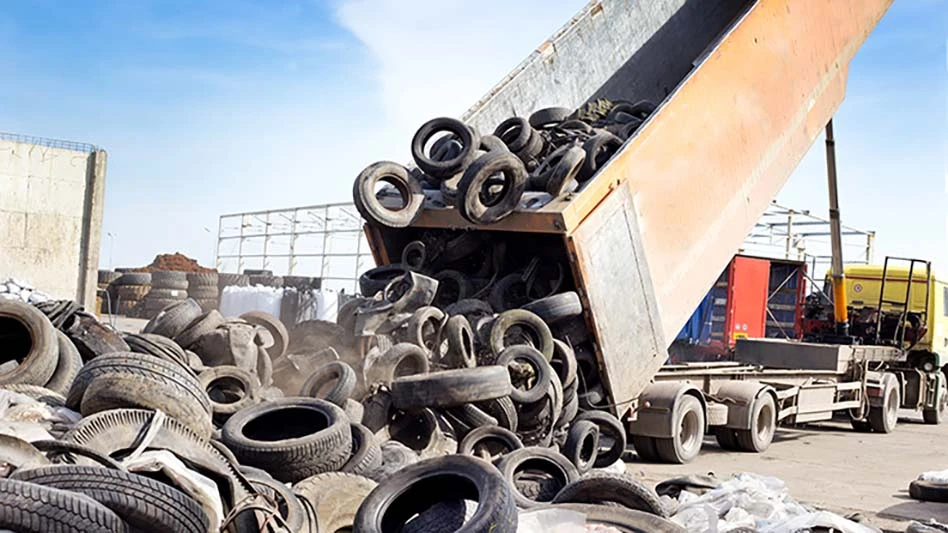A look at the history of major recovered fiber market downturns is helpful when examining the current major price drop to provide perspective and see how it compares to other major market corrections over the last 20 years.
Although much of the commentary and data are for OCC (old corrugated containers) in the U.S., the information is useful to understand the overall market.
1989 THROUGH 1993
This five-year time frame represented the longest sustained market downturn in the recovered paper industry in the last 30 years. During these years, the United States average OCC price was approximately $35 per ton.
The following market forces characterized this time frame:
• The major ramping up of North American paper recycling collection caused a chronic oversupply of almost all grades of recovered paper. A series of local, state and provincial policy and legislative initiatives put the collection system in high gear beginning in approximately 1988 and increased for more than five years. The U.S. paper recovery rate, which was 30 percent in 1988, rose to 40 percent by 1994.
• ONP (old newspapers) led the oversupply as the residential curbside recycling system grew rapidly, yet demand for ONP in North American newsprint was modest. Based on these five years of low prices and a series of recycling initiatives requiring recycled content in newsprint production, the situation changed rapidly in 1993 and 1994.
• During this time, commercial recycling also grew fairly rapidly, but less so than the residential system.
• The recession of 1990 was followed by slow growth in 1991, but the market downturn started well before the economic slowdown.
• After very low prices in 1989, 1990 and 1991, the market slipped further in 1992 and 1993.
• Before 1989, the market was not greatly overheated, but well above the five-year price slump of the early 1990s.
• During this time, the cost of collection exceeded the market value of OCC for the longest period ever. It was a very difficult time for the suppliers.
The primary cause of this lengthy downturn was an oversupply of recovered paper, which, because of the rapid growth in residential recycling in the United States, did not decrease, as residential curbside recycling collection does not cease with low recovered paper prices.
SECOND HALF of 1995 AND 1996
Coming out of the previously described four-year slump, 1994 and 1995 showed sharp upturns in recovered paper prices. Supply growth had slowed based on low market prices and hitting the tail end of six years of major collection infrastructure growth, coupled with a series of new mill start-ups in recycled newsprint and containerboard in 1993, 1994 and 1995.
The U.S. average OCC price in 1994 and 1995 was an unprecedented (up to that time) $115 per ton. Spot prices for OCC in the second quarter of 1995 reached more than $250 per ton. The two-year average price of OCC includes the slump in the second half of 1995 and a relatively slow market in early 1994.
The average price of OCC in 1996 fell more than $70 from 1995. The market fell from its peak in May 1995 of more than $200 per ton to less than $50 per ton by September 1995.
This market downturn did not occur during any great U.S. economic slowdown. Instead, it was the result of:
• Increased generation in light of the ultra-high prices in early 1995;
• Slowing demand with the number of recycle mill projects declining because of the flurry of new capacity that occurred in the previous years;
• The high price markets experienced for that time;
• 1995 was also the first time that export demand became the strongest driver in the upward price movement experienced in the United States; and
• The primary cause of the downturn in late 1995 and into 1996 was the overheated market in the first half of 1995 that needed a correction. In 1996 the market value of OCC reached the cost of collection, from which it sharply rebounded in 1997. This was the typical market reaction through history for collection vs. market costs/values.
2001
After reasonable, sustained recovered paper price growth from 1998 to 2000 (OCC prices rose from a $70 per ton average in 1998 to $90 per ton in 2000), the OCC market fell $40 per ton to a $50 per ton U.S. average in 2001.
This downturn had two primary driving forces: Prices became somewhat overheated, and the U.S. economy entered a recession in 2001.
From 1998 to 2000 was the second time sustained increases in recovered paper exports fueled market growth. The primary cause of the market fall was the decline in the U.S. economy. This was the second time in the 20 years examined that collection costs fell well below the market price. As was usual in the past (except for 1989 through1993), this corrected itself the following year.
FALL 2008
After the downturn in 2001, U.S. recovered paper trend line prices increased fairly steadily for the next six-and-a-half years, with OCC prices rising from $50 per ton in 2001 to $135 per ton in the first half of 2008.
In 2005 and 2006, prices moderated, going down $5 per ton in each of those years before OCC prices rocketed up from $80 per ton in 2006 to where the market stood in the early fall of 2008. It’s worthwhile to note that the market price of OCC touched the cost of collection in 2006, from which it rebounded in 2007.
This time frame solidified that export demand had become the key driver in upward price movements, as China’s appetite for recovered fiber grew rapidly during this time frame.
The current downturn is rooted in a few classical causes of such market corrections and one unprecedented situation:
• U.S. recovered paper prices had overheated by the end of the second quarter of 2008. U.S. average OCC prices moved from $77 per ton in the fourth quarter of 2006 to $135 per ton in the second quarter of 2008.
• After new collection programs for recovered paper slowed from the late 1990s through early 2000s, sustained upward prices from 2004 to 2008 (and especially from mid-2006 to mid-2008) led to new recovery programs.
• Chinese demand, which had been fueling the rise, was also overheating. A correction in the over-building of new mill capacity in that country was due. China’s non-market based economy built more capacity throughout the last five years than the local and world market was able to absorb. Moore & Associates correctly called the top of the OCC market in the second quarter of 2008.
• The credit crises, coupled with a precipitous drop in Chinese demand, touched off the current market downturn, which, for its steepness and rapidity, has been unprecedented in the world’s recovered paper business.
• With a large part of Europe’s and the United States’ recovered paper business relying on exports, China’s pullback touched off the correction.
• Structurally the upward price movement in the U.S. market in several grades was caused by the slowdown in the use of paper in the U.S. economy. This was particularly so for ONP and printer grades.
• Although China touched off the market downturn, a major concern is the depth and length of the U.S. recession, as we are seeing major downtime being taken by the containerboard, recycled-content paperboard and newsprint producers in North America.
• As we had first seen in the 1989 to 1993 market downturn, the generation of ONP through residential curbside collection does not turn off the supply of the grade during market price downturns. This has now spread to mixed paper, much of which is generated by residential programs. The other sector that does not react to lower market prices is SOP (sorted office paper), now generated primarily through document destruction, which does not decrease with market price downturns.
• A substantial part of the OCC market does not react to lower prices either. Typical involuntary generators, such as supermarkets, large retail outlets and distribution centers, have always been producers, regardless of the OCC market. However, now a new group of smaller generators, driven by environmental and green pressures, are willing to pay to have their materials collected with low market prices. This is the second big structural concern of the current downturn—only a small part of recovered paper supply disappear when market prices plummet.
North American mills and to a lesser degree (but more significant than in previous downturns) the collection system have begun to inventory materials.
Suppliers are storing material that cannot be moved or only moved at very low prices, hoping to get them back into the market at a later time. This approach has caused the market not to go any lower, but will extend the very low market prices.
Another recent phenomenon is that the shipping companies have begun offering freight discounts to shippers, helping increase export volume and pricing.
China’s economy will bounce back. Once the current mill glut of finished product inventory (estimated at between two to four months of supply) and recovered paper inventories (estimated to be less and falling) has worked through the system, the new large machines in this country will begin to produce at high operating rates.
China’s position relative to cash on hand and the central government’s desire to pump up the economy is an unknown at this point. The other major question is whether China can grow in a time of U.S. recession and reduced need for Chinese-made goods in the U.S.
The author is a principal with paper industry consulting firm Moore & Associates, Atlanta, and can be contacted at MARecycle@aol.com. This feature first ran in the January issue of Recycling Today Global Edition.
Latest from Recycling Today
- Lautenbach Recycling names business development manager
- Sebright Products partners with German waste management equipment company
- WasteExpo transitions to biennial format for enhanced experiences
- Study highlights progress, challenges in meeting PCR goals for packaging
- Washington legislature passes EPR bill
- PureCycle makes progress on use of PureFive resin in film trials
- New copper alloy achieves unprecedented high-temperature performance
- Gränges boosts profits and sales volume in Q1 2025





